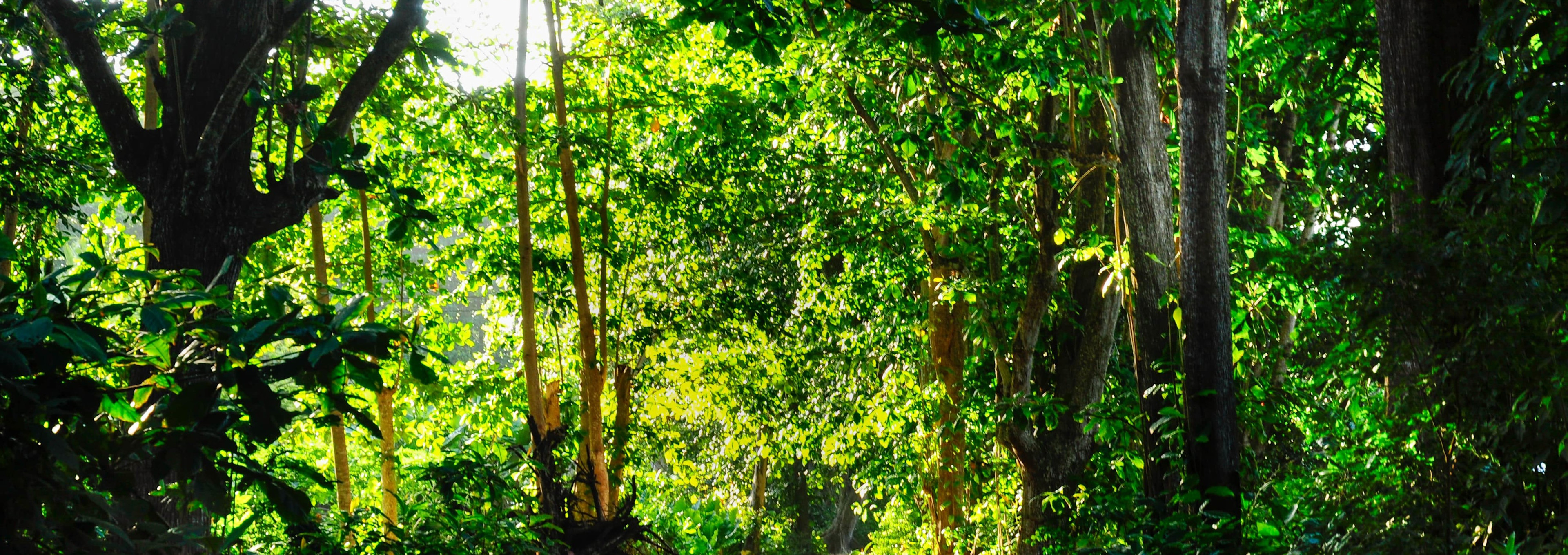

SI Dilemma: How do you see the wood for the trees?
We face a twin crisis of climate change and declining biodiversity, and both need to be tackled without delay. Climate change and nature loss are fundamentally linked. One cannot be solved without solving the other. But navigating the climate transition is already challenging enough, let alone addressing the myriad impacts of investments on ecosystems and species. The dilemma for investors is how to take concrete actions on both fronts without being overwhelmed by complexity.
まとめ
- How to solve climate and biodiversity issues without complexity overload
- Insisting on an integrated approach could lead to analysis paralysis
- Ensuring that the work done on both topics is compatible will work best
Climate change is one of the main drivers of biodiversity loss, and nature loss is one of the main causes of climate change. Rising temperatures are changing weather patterns which contributes to one in six species being at risk of extinction1. On the other hand, land use change is a leading cause of climate change, contributing to an estimated 13-23% of total CO2 emissions2. Forest loss alone contributes to about 4.8 billion tonnes of CO2 emissions/year3.
On the other hand, it also holds that solving one contributes to solving the other. Nature-based solutions are critical to achieving the goals of the Paris Agreement. Oceans, forests and soils sequester carbon from the atmosphere and help avoid further global warming. This is estimated to be of the order of 14 billion tons of CO2 equivalent (GtCO2e) per year in 2050, which is roughly one-quarter of current annual emissions.4,5

What the 2023 Global Climate Survey means for investors
Recorded webinar
Because the two issues are interlinked, there is a clear case for tackling them in an integrated manner, both to avoid unintended consequences and to capture synergies. This is what scientists from the two relevant UN science panels – the Intergovernmental Science-Policy Platform on Biodiversity and Ecosystem Services (IPBES) and the Intergovernmental Panel on Climate Change (IPCC) – conclude.6 For example, the use of biomass as a renewable energy source may be a good solution for climate change, but it is detrimental for biodiversity if natural habitats are converted into monoculture plantations.
The COP27 climate summit in November 2022 included a full day on nature-based solutions and the interconnections between biodiversity and climate change. This served as a bridge to the COP15 biodiversity summit which took place one month later. This year’s climate summit in Dubai will also have a strong focus on nature.
There is also a practical reason that business is advocating for an integrated approach, namely framework fatigue. In the medium term, we should be able to undertake an integrated approach to climate and nature in our investment portfolios. For now, however, we believe that insisting on an integrated approach could lead to analysis paralysis.
The difficulty of tackling biodiversity and climate together
An integrated approach compounds the complexities of analysis of these two vast topics. This risks inaction or a dilution of focus, leading to investors not considering climate and nature risks and opportunities sufficiently enough to drive meaningful change.
Climate change is just one of the five drivers of biodiversity loss – some others are land and sea use change, resource exploitation, invasive species, and pollution. Though complex, it can be funnelled down to a single metric which is globally transcendent: greenhouse gas emissions.
On the other hand, biodiversity assessment is still very nascent and requires consideration of impacts and dependencies which occur locally. For example, water scarcity is specific to supply and demand in individual watersheds, and nitrogen discharge is highly problematic in a densely populated country like the Netherlands, but not necessarily in a country like France. This makes it difficult to capture biodiversity in a single global dimension.
While more work needs to be done, climate change assessment is becoming mainstream in investment decision making. Assessing the drivers of biodiversity loss, however, requires more work to capture the nuances. For climate, we have integrated assessment models that relate global climate models to key macroeconomic variables. For nature, we don’t have such models. To develop these, we recommend developing them in a modular way, such that additional levels of complexity can be added over time.
Biodiversity follows in climate’s footsteps
Ensuring that the work done on both topics is compatible, while acknowledging that they are not yet ready to be fully grouped together, will work best in our view. We already see this happening in practice, for example:
Global commitments. The Kunming-Montreal Global Biodiversity Framework follows the same mechanism as the Paris Agreement: the global goal (no net loss of nature by 2030) is to be achieved through periodic ratcheting of national targets and policies, and through the alignment of business models and financial flows.
Disclosure standards. The Taskforce for Nature-related Financial Disclosures (TNFD) follows the same four-pillar structure of the Taskforce for Climate-related Financial Disclosures (TCFD), enabling companies to leverage existing reporting processes.
Company engagement. Modelled on Climate Action 100+, global investors collaborate in Nature Action 100 to engage with companies that have the largest impact on biodiversity.
Scenario analysis. The central banks’ Network for Greening the Financial System (NGFS) and the Principles for Responsible Investment’s Inevitable Policy Response (IPR) are introducing nature into climate transition risk assessments where the key drivers (policies, technologies and market dynamics) are assessed in an integrated way.
サステナビリティに関する最新のインサイトを把握
ロベコのニュースレター(英文)に登録し、サステナブル投資の最新動向を探求しましょう。
What does this mean for investors?
Both climate change and biodiversity are financially material risks that need to be taken into account, but that does not mean we need to wait until we have the tools for an integrated approach. At Robeco, we tackle both topics as separate but related strategic priorities to give them the necessary attention and to conduct a robust analysis. We leverage the learnings from creating our climate net-zero roadmap to develop our biodiversity strategy, both of which are led by our climate and biodiversity strategist.
We acknowledge that the tools and data needed for biodiversity assessment are not as mature as those for climate. However, we act where we can, focusing on the key biodiversity impacts by sector, and identifying the key actions that companies in that sector can undertake to mitigate their contribution to biodiversity loss.
Investors may feel overwhelmed by too many sustainability considerations being added to their decision-making process. We approach this at Robeco by having a robust materiality assessment for each sector and sustainability issue. We use our SDG Framework for the Sustainable Development Goals under which biodiversity, climate and other sustainability topics fit. This allows us to aggregate sustainability impacts into a single score while keeping the underlying granularity of the different sustainability topics. In this way, we are dealing with multiple issues simultaneously, while still taking a modular and non-integrated approach.
We can tackle both issues now
Lots of work remains to be done. In particular, for halting biodiversity loss we need sector transition pathways like we already have for decarbonization. These should serve as benchmarks to assess companies in a forward-looking way as to how they are aligning their businesses with the goals of the Kunming-Montreal agreement.
Methodologies and data for biodiversity assessment are being rapidly developed to support investment decision making. We have learned a lot from assessing climate-related risks and opportunities, which we can apply to take action to halt biodiversity loss. Perhaps because of these learnings, we may be able to move faster on addressing biodiversity loss than we have on climate change.
Footnotes
1 Models of drivers of biodiversity and ecosystem change | IPBES secretariat
2 Special Report on Climate Change and Land - IPCC
3 Integrating climate and nature - University of Cambridge Institute for Sustainability Leadership
4 Forest, Land and Agriculture Science Based Target-Setting Guidance - SBTi
5 Global GHG emissions 1990-2019 | Statista
6 IPBES-IPCC Co-Sponsored Workshop on Biodiversity and Climate Change | IPBES secretariat
SIディベート
重要事項
当資料は情報提供を目的として、Robeco Institutional Asset Management B.V.が作成した英文資料、もしくはその英文資料をロベコ・ジャパン株式会社が翻訳したものです。資料中の個別の金融商品の売買の勧誘や推奨等を目的とするものではありません。記載された情報は十分信頼できるものであると考えておりますが、その正確性、完全性を保証するものではありません。意見や見通しはあくまで作成日における弊社の判断に基づくものであり、今後予告なしに変更されることがあります。運用状況、市場動向、意見等は、過去の一時点あるいは過去の一定期間についてのものであり、過去の実績は将来の運用成果を保証または示唆するものではありません。また、記載された投資方針・戦略等は全ての投資家の皆様に適合するとは限りません。当資料は法律、税務、会計面での助言の提供を意図するものではありません。 ご契約に際しては、必要に応じ専門家にご相談の上、最終的なご判断はお客様ご自身でなさるようお願い致します。 運用を行う資産の評価額は、組入有価証券等の価格、金融市場の相場や金利等の変動、及び組入有価証券の発行体の財務状況による信用力等の影響を受けて変動します。また、外貨建資産に投資する場合は為替変動の影響も受けます。運用によって生じた損益は、全て投資家の皆様に帰属します。したがって投資元本や一定の運用成果が保証されているものではなく、投資元本を上回る損失を被ることがあります。弊社が行う金融商品取引業に係る手数料または報酬は、締結される契約の種類や契約資産額により異なるため、当資料において記載せず別途ご提示させて頂く場合があります。具体的な手数料または報酬の金額・計算方法につきましては弊社担当者へお問合せください。 当資料及び記載されている情報、商品に関する権利は弊社に帰属します。したがって、弊社の書面による同意なくしてその全部もしくは一部を複製またはその他の方法で配布することはご遠慮ください。 商号等: ロベコ・ジャパン株式会社 金融商品取引業者 関東財務局長(金商)第2780号 加入協会: 一般社団法人 日本投資顧問業協会





















